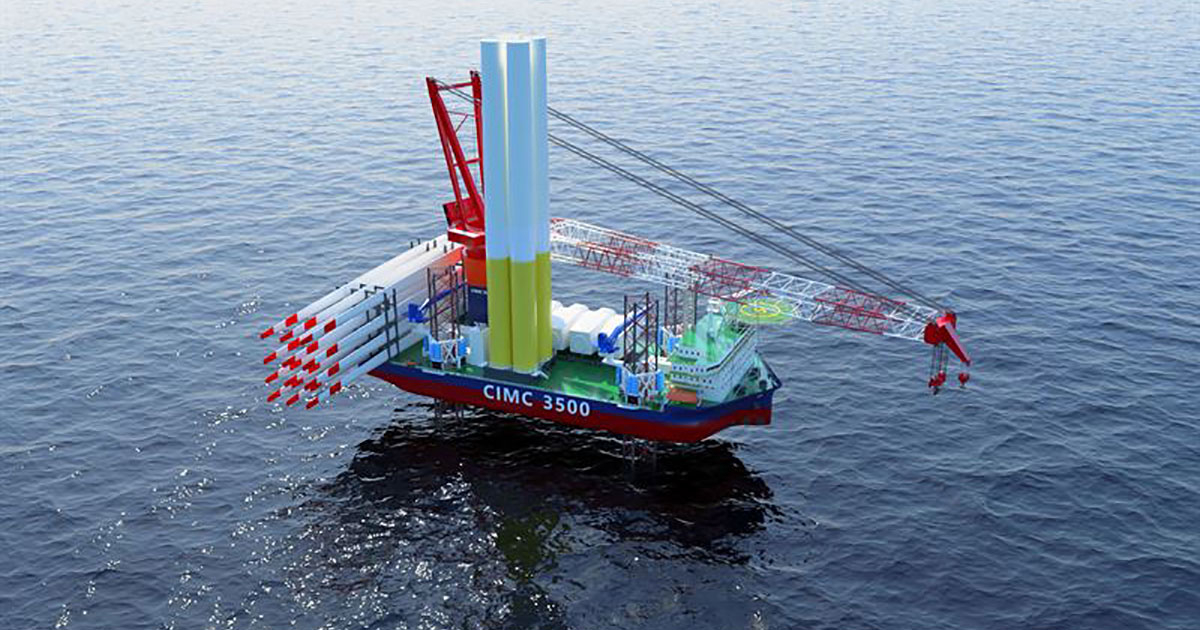ABS Approves Dual-Fuel Methanol Design of Offshore Wind Turbine Installation Vessel

ABS issued approval in principle (AIP) to Yantai CIMC Raffles Offshore Ltd. for its design of a dual-fuel methanol, heavy-duty, offshore wind turbine installation vessel (WTIV).
The WTIV is capable of transporting and installing the largest wind turbines in the world, those capable of producing 16 to 20 megawatts of electricity, and promises to reduce carbon emissions with its dual-fuel methanol propulsion system.
The design also features a 3,500-ton leg encircling crane and a strong, sea-keeping dynamic positioning system (DPS) that aligns with ABS class requirements DPS-2.
“This is an exciting development for the offshore wind market, which is a key player in the global energy evolution. Support vessels like WTIVs are in short supply, and new builds are being hampered by challenging market dynamics. This design from Yantai promises to meet the need for high-capacity, heavy-duty offshore wind projects,” said Rob Langford, ABS Vice President, Global Offshore Wind.
“ABS understands and is deeply involved in supporting clients with alternative fuels as part of their decarbonization journey. Methanol has emerged as a favorite among new designs as it represents a ‘here-now’ technology rather than a ‘hoped-for.’ We are proud to support Yantai in their sustainable design for offshore wind projects,” said Panos Koutsourakis, ABS Vice President of Global Sustainability.
“The vessel is designed for the European market, with a maximum lifting weight of 3,500 tons and a maximum lifting height of 228 meters above sea level and can carry seven sets of 14 MW or four sets of 20 MW wind turbine components. This vessel is equipped with a dual-fuel main engine and hybrid battery system, reducing carbon emissions and fuel consumption. Given the complex international market and rising raw material prices, the design offers better economics and stronger competitiveness,” said Fu Qiang, Director of CIMC Raffles Strategy R&D Centre.
ABS developed global standards for offshore wind foundations, both fixed and floating, substations and the unique vessels that support the industry. With more than 70 years of experience in the offshore sector, ABS understands the needs of owners and operators to enhance operational efficiencies with sustainable energy solutions. ABS certified the first semisubmersible offshore wind turbine WindFloat I, classed the world's largest floating wind turbine Windfloat Atlantic and classed Kincardine, the world’s largest floating offshore windfarm at its commercial online date (COD).

